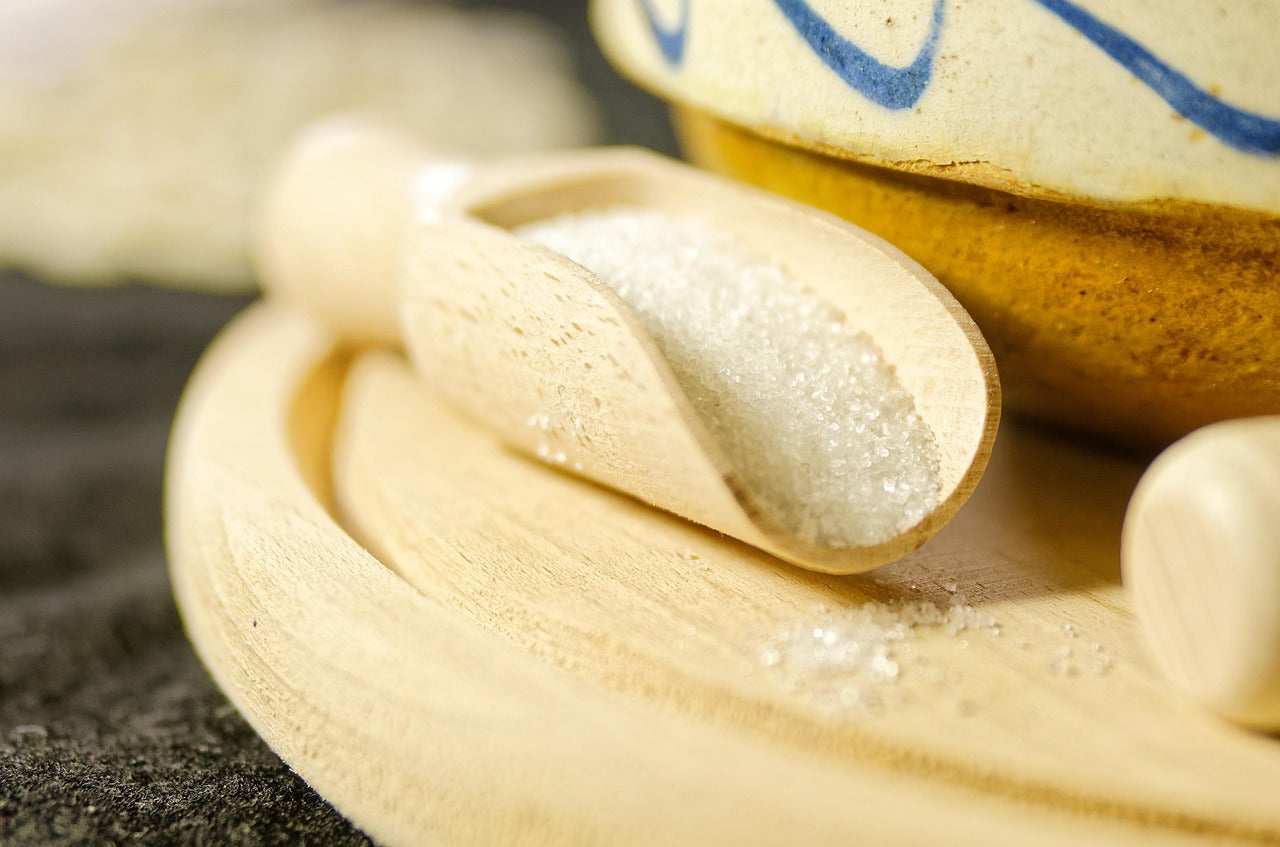
It’s Time to Talk about Monk Fruit
Does Monk Fruit Come From Monks?
The answer is “no, it doesn’t come from monks.”
Monk fruit (also known as luo han guo) is a small, round fruit native to southern China, from the plant Siraitia grosvenorii.
When the fruit’s juice is extracted and purified, you get compounds called mogrosides (especially mogroside V), which are intensely sweet, up to 100-250 times sweeter than table sugar but with virtually no calories or digestible carbs.
This is why it has quickly become a go-to for sugar replacements.
Because of this, monk fruit sweeteners have become popular as a sugar substitute in coffees, desserts, low-sugar products, and by people managing weight or blood sugar.
How Monk Fruit Works in the Body
The sweetening mogrosides aren’t processed like regular sugar; they pass mostly through the small intestine without being converted into glucose, meaning they don’t raise blood sugar or trigger big insulin spikes.
This is one of the primary issues with most forms of sugar.
When you eat regular sugar, your body breaks it down into glucose and fructose, which are quickly absorbed into the bloodstream, raising both blood sugar and insulin levels.
Monk fruit, however, works very differently.
Once consumed, the mogrosides pass through the small intestine largely unabsorbed. The body’s digestive enzymes may break them down slightly, but the resulting components are mostly excreted through urine or stool.
Because your body doesn’t metabolize mogrosides for energy, monk fruit delivers virtually zero usable calories and does not raise blood glucose or insulin levels.
Early research also suggests monk fruit may do more than just stay neutral in the system. Some studies indicate that mogrosides might have a prebiotic effect on the gut, supporting beneficial bacteria and helping reduce inflammation in the intestines.
The compounds also appear to exhibit antioxidant and anti-inflammatory properties, scavenging free radicals and reducing oxidative stress in cells. This could explain some of the emerging evidence that monk fruit may help support healthy blood sugar, liver function, and general metabolic balance.
Unlike some artificial sweeteners, monk fruit doesn’t seem to alter appetite hormones or activate reward pathways in the brain that drive cravings.
In other words, it may satisfy your sweet tooth without triggering the same post-sweetener hunger or sugar-seeking cycle seen with products like aspartame or sucralose.
In short, monk fruit provides sweetness your body doesn’t recognize as sugar.
It passes through the digestive system without raising blood sugar, contributing calories, or feeding harmful gut bacteria, and may even have subtle anti-inflammatory or antioxidant benefits in the process.
That’s what makes it such an appealing natural sweetener: it delivers the taste you want, without sending your metabolism into overdrive.
Five Potential Benefits of Monk Fruit
The truth is that monk fruit offers benefits that other natural, low-calorie sweeteners may not.
-
Zero/Low Calorie Sweetening
Because monk fruit sweetener delivers intense sweetness without calories or carbs, it can help reduce added sugar intake, a win for weight control and metabolic stress. -
Blood Sugar & Insulin Stability
Studies show that monk fruit doesn’t raise blood glucose or insulin the way sugar does. A small meta-analysis noted reductions in post-meal glucose (10–18%) and insulin (12–22%) with monk fruit extract. -
Anti-Inflammatory & Antioxidant Effects
The mogrosides appear to inhibit oxidative stress and inflammation in cell and animal studies, which may support long-term health (though human data is limited). -
Dental & Oral Health Potential
Because it’s non-fermentable and contains no sugar, monk fruit sweetener doesn’t promote tooth decay in the same way sugar does — making it gentler on dental health. -
Sustainability & Clean-Label Appeal
Monk fruit taps into the natural, plant-based sweetener trend. Some reviews point to its lower environmental impact compared with high-impact sugar agriculture.
Important Risks & Limitations to Know
No ingredient is a free ride. Here are some things you should be aware of:
-
Limited long-term human studies. While monk fruit is generally recognized as safe (GRAS) by the U.S. FDA, regulatory bodies such as EFSA point out that the database is still insufficient to draw full conclusions about long-term safety.
-
Mixed products = hidden ingredients. Many monk fruit sweeteners are blended with other sweeteners or sugar alcohols (especially erythritol). Some recent findings suggest erythritol may carry cardiovascular risk in certain populations, so the “monk fruit combo” isn’t always as benign as it looks.
-
Taste and functionality issues. Some people detect a mild aftertaste or metallic/bitterness, and in baking or cooking, monk fruit doesn’t always perform identically to sugar in terms of texture and browning.
-
Over-reliance risk. Replacing sugar is helpful, but it doesn’t replace the benefits of whole-food sweeteners in the diet. If someone replaces sugar with healthier options but continues to eat highly processed foods, the benefit may be limited.
-
Individual variability. It's worth checking with a provider, especially if someone has gut sensitivities, reacts to sugar alcohols, or is using medications or is in a state of health where sweetener choice matters.
Practical Tips: How to Use Monk Fruit Wisely
-
When choosing a monk fruit sweetener, read the label — look for pure monk fruit extract or know what else it is blended with.
-
Use monk fruit to replace table sugar in beverages, dressings, or foods where texture is not critical.
-
For baking or candy-making, be aware that monk fruit may behave differently than sugar in recipes (less browning, different volume).
-
Don’t assume “zero calories” = “healthy” in all ways. It’s one tool; dietary pattern still matters.
-
If you have diabetes, gut issues, or use medications where sweetener choice matters, talk to your healthcare provider about using monk fruit.
-
Monitor how you feel: do cravings change? Do you notice any digestive changes? These personal cues matter.
The Bottom Line
Monk fruit is a promising natural sweetener with clear advantages over traditional sugar — especially for those managing calories or blood sugar. Its unique compounds (mogrosides) give it sweet power without the metabolic baggage of sugar.
That said, it’s not perfect and not a magic bullet.
The long-term human data is still thin, many products are blended (which complicates things), and the broader dietary context really matters.
Used wisely, monk fruit can be a smart addition to your toolkit, especially if you’re committed to reducing added sugar, supporting metabolic health, and improving dietary quality. But like all tools, it works best as part of a bigger strategy: whole food, plenty of fiber, good sleep, movement, and fewer processed foods.



